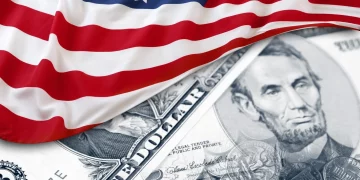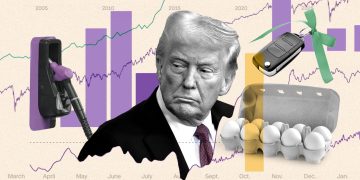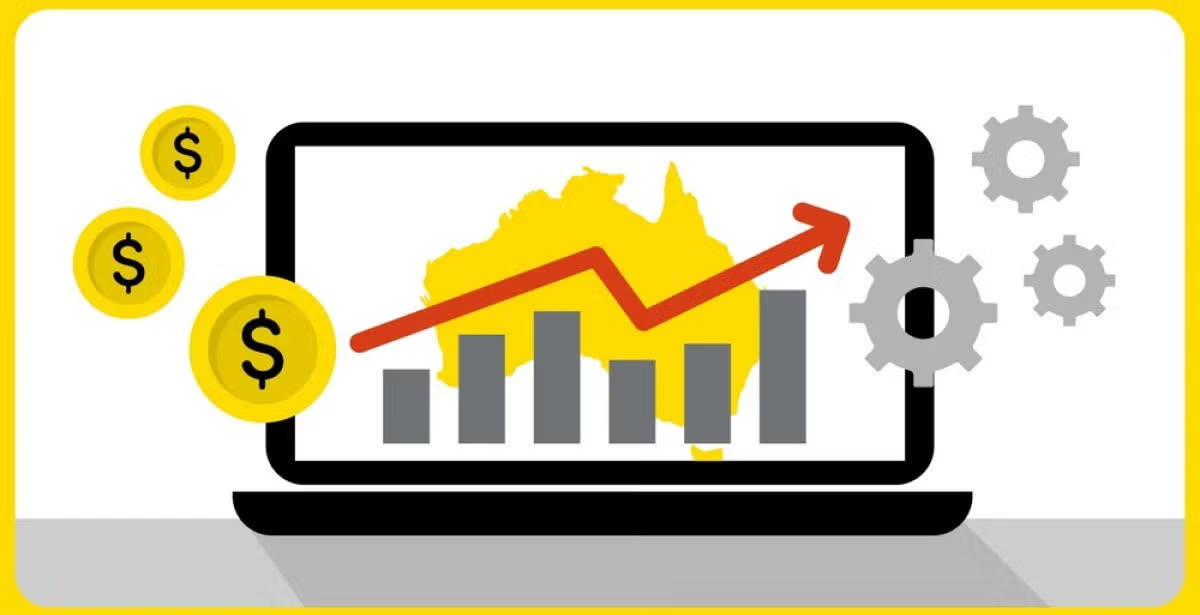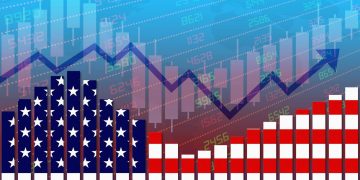The Rise of Retail Investors and the New American Market Psychology
Over the past decade—accelerated dramatically by the COVID-19 pandemic—the United States has witnessed one of the most profound sociopsychological and structural shifts in its financial markets: the explosive rise of retail investors. What was once a marketplace dominated almost exclusively by institutional giants—hedge funds, pension funds, banks, and market-making firms—has gradually transformed into a hybrid ecosystem in which individuals, empowered by zero-commission trading, mobile-first brokerages, social influence, and unprecedented access to leverage, play a central role. The modern American retail investor is no longer a passive long-term saver. Instead, they are a highly networked, psychologically expressive, speculative, and culturally influential market participant whose behaviors ripple far beyond their share of total assets.
This article explores this transformation in depth: its origins, its catalysts, the behavioral dynamics that define the new retail cohort, its interaction with institutional players, the lasting impact on U.S. market structure, and the future direction of American retail-market psychology. Through this examination, one thing becomes clear: retail investing in the United States has become not merely a financial activity but a cultural identity, a form of digital expression, and a collective social phenomenon.
I. The Historical Context: From Passive Savers to Active Speculators
To understand the current retail revolution, it is necessary to trace how American individual investors have evolved. Historically, retail participation in U.S. equities followed a cyclical pattern: mass engagement during major bull markets, and long periods of retreat after crashes. In the 1920s, middle-class Americans speculated heavily before the 1929 crash. Retail investing surged again in the 1950s and 1960s as the postwar middle class grew. The 1980s saw a new wave of participation thanks to workplace retirement plans such as 401(k)s. And the dot-com boom of the late 1990s brought a new generation of tech-enthusiast individuals into markets—many of whom quickly exited after the crash.
But in all these periods, the average retail investor was still constrained: trading required a broker, commissions were expensive, market data was limited, and information asymmetry was massive. The average American did not possess the tools, speed, or analytical resources to act like a professional trader.
The 2010s changed everything. Three structural innovations democratized access at scale:
- Zero-commission trading, pioneered by Robinhood and later adopted across Wall Street.
- Fractional shares, allowing even small budgets to buy high-priced equities.
- Mobile-first trading apps, which replaced traditional brokerage platforms with gaming-like interfaces.
These changes shifted retail behavior from traditional long-term investing toward high-frequency speculative trading. The smartphone became the new trading desk, and millions of Americans, especially younger ones, began trading like digital natives rather than conventional savers.
The result was a new category of retail investors—one defined not by wealth, but by participation intensity.
II. The Pandemic Catalyst: Liquidity, Isolation, and the Birth of Market Pop Culture
The COVID-19 pandemic served as the true ignition moment. In early 2020, the United States entered lockdown. Sports leagues halted. Casinos closed. Millions worked from home or lost jobs. Stimulus checks were issued. Interest rates dropped to zero. And the stock market crashed—then rebounded with unprecedented speed.
The economic and psychological environment created a perfect storm:
- Excess liquidity from stimulus and unemployment benefits.
- Limitless time for digital engagement.
- A collective search for community amid isolation.
- A growing distrust of institutions, including Wall Street.
- The cultural dominance of internet humor and meme culture.
This confluence created what some economists have called the “speculative generation”—millions of Americans who approached the stock market not just as an investment platform, but as a form of entertainment, an identity project, and a social battleground.
Meme stocks such as GameStop and AMC became the symbols of this new era. What began as a niche conversation on Reddit’s r/WallStreetBets evolved into a mass collective movement that challenged hedge funds, turned short squeezes into cultural events, and showed the world that retail investors could move markets at scale. Tens of billions of dollars traded hands. Market-wide volatility surged. Hedge funds experienced historic losses. Congressional hearings followed.
But the most enduring legacy was not any single trade. It was the birth of market pop culture—finance as social expression.
III. Psychological Drivers: Why Retail Investors Became a Cultural Force
Understanding the new American retail investor requires recognizing the psychological dynamics that differentiate them from earlier generations. These include:
1. Financial Markets as Identity and Lifestyle
For many retail investors, participation is no longer a purely rational financial decision. It is an integral part of personal identity. Owning a meme stock becomes an act of loyalty. Losing money can still feel meaningful if it aligns with the tribe. This identity-driven trading represents a dramatic break from classical financial theory.
2. FOMO as a Market Force
Fear of missing out—amplified by social networks—has become one of the strongest drivers of retail flows. Viral screenshots of gains, overnight sensations in crypto, or sudden short squeezes create waves of emotional contagion. Retail investors chase momentum not only for financial reward but for social validation.
3. Gamification and Instant Feedback
Trading apps intentionally incorporate psychological triggers similar to gaming: dopamine-driven notifications, simplified user pathways, intuitive visuals, and fast execution. These features encourage repeated engagement and short-term speculation.
4. Community-Driven Conviction
Unlike past retail investors who operated independently, today’s markets are deeply social. Information is shared instantly. Beliefs form collectively. Conviction amplifies through group reinforcement. Community itself becomes a form of psychological leverage, strengthening risk tolerance and reducing fear.
5. Anti-Establishment Narratives
A significant portion of retail engagement is driven by distrust of institutional finance. Many Americans feel excluded from economic opportunity, frustrated by inequality, and eager to challenge the power structures of Wall Street. Meme-stock movements often have a populist undertone.
This blend of identity, emotion, tribalism, and narrative power forms the core of the new American retail psyche.
IV. Structural Impact: How Retail Investors Reshaped the U.S. Market
The U.S. financial system has been forced to adapt to the rise of retail traders.
1. Increased Market Volatility
High volumes of short-term retail trading amplify intraday volatility, especially in small-cap and heavily shorted stocks. Algorithmic trading systems react to retail flows, creating feedback loops.
2. Options Market Transformation
Retail investors have dramatically increased usage of short-dated call options, influencing volatility surfaces and market-maker hedging behavior. The rise of zero-day-to-expiration (0DTE) trading—once a tool of professionals—has now permeated the retail community, further reshaping market microstructure.
3. Brokerage Industry Disruption
Traditional brokerages were forced to eliminate trading fees. The entire revenue model of retail finance shifted toward payment for order flow, margin lending, securities lending, and subscription services.
4. Regulatory Shift
The SEC has faced pressure to revisit market plumbing. Issues like settlement cycles, short-selling transparency, gamification, and payment for order flow have become national debates.
5. Corporate Behavior Change
Companies now treat retail investors as a strategic audience. Quarterly earnings calls incorporate accessible language. Retail-oriented communication (e.g., direct Q&A portals) is expanding. Some firms actively court retail investors as brand ambassadors.
Retail is no longer peripheral—it is a structurally relevant part of market architecture.
V. Interaction with Institutions: Cooperation, Conflict, and Convergence
The narrative of “retail versus Wall Street” is popular but incomplete. In reality, retail and institutional investors are increasingly intertwined.
1. Hedge Funds Now Monitor Social Sentiment
Many institutional funds use AI-driven sentiment analysis tools to track Reddit, X, Discord, and TikTok conversations, treating retail chatter as an influential signal.
2. Market Makers Benefit from Retail Flow
Firms like Citadel Securities profit from retail order flow, which is less informed and therefore easier to price, improving market-maker profitability.
3. Competition in Options Markets
Retail’s aggressive use of options has created situations in which market-maker hedging interacts with retail momentum, sometimes amplifying volatility in both directions.
4. Institutional “Meme Stock Trading”
Some hedge funds actively join meme-stock trades, riding retail-driven waves for profit. The supposed divide between retail and institutional investors is more fluid than it appears.
VI. Demographic Shifts: Gen Z, Millennials, and the Future Retail Investor
The new retail cohort is dominated by younger generations.
- Millennials entered markets after the 2008 crisis and matured during the longest bull market in history.
- Gen Z sees markets not as distant financial systems but as integrated parts of digital life, accessible through apps and social media.
These generations differ from older investors in key ways:
- Higher risk tolerance
- Shorter time horizons
- More speculation-oriented behavior
- Greater distrust of traditional financial institutions
- Stronger engagement with digital assets and emerging technologies
As these generations accumulate wealth, their behavior will increasingly shape U.S. markets.

VII. The Crypto Parallel: The Purest Form of Retail Finance
Cryptocurrency markets represent the extreme of retail-driven finance. They embody many of the same psychological and cultural dynamics seen in stock trading, but intensified:
- 24/7 markets
- No institutional dominance
- Meme-driven narratives (e.g., Dogecoin, Shiba Inu)
- High leverage
- Rapid cycles of hype and collapse
Crypto has served as both a training ground and cultural accelerator for the new generation of retail investors. Its influence on broader U.S. financial behavior cannot be overstated.
VIII. Risks and Vulnerabilities: The Dark Side of Retail Participation
While democratization has many benefits, the rise of retail investing carries significant risks.
1. Exposure to Leverage
Margin trading and options activity expose retail investors to sudden losses.
2. Behavioral Biases
Confirmation bias, herd mentality, and optimism bias can produce overconfidence and financial harm.
3. Market Manipulation
Coordinated online campaigns can push retail investors into pump-and-dump schemes.
4. Wealth Inequality
Despite narratives of democratization, most retail traders lose money. Heavy retail speculation can accelerate wealth disparities rather than reduce them.
5. Regulatory Lag
The pace of digital speculation has outstripped the pace of regulation, leaving systemic vulnerabilities unresolved.
IX. Long-Term Outlook: Where Is American Retail Investing Headed?
The rise of retail investors is not a temporary pandemic-era phenomenon. It represents a fundamental shift in American market culture. Key trends likely to shape the next decade include:
1. Institutionalization of Attention-Based Markets
Sentiment, social signals, and viral narratives will become core components of market models.
2. Growth of Micro-Investing and Fractional Finance
Retail participation will continue expanding even among lower-income groups.
3. Hybrid Human–AI Trading
AI-powered personal trading assistants will transform how individuals make decisions.
4. Corporate–Retail Alignment
Companies will increasingly engage directly with retail investors, creating new forms of shareholder communities.
5. Regulation of Behavioral Design
The SEC may impose rules on user-interface gamification and leverage access.
6. Cultural Permanence
Retail investing has become embedded in American digital culture. It will not disappear—even if markets fluctuate.
Conclusion: The New American Market Is Psychological, Social, and Mass-Participatory
The United States has entered an era in which financial markets are shaped not only by macroeconomics or institutional capital flows but by mass psychology, digital identities, and the social dynamics of networked communities. Retail investors are now permanent players—culturally expressive, digitally empowered, socially interconnected, and psychologically influential.
Their rise marks a profound transformation in the American financial landscape. And as the lines between investing, entertainment, identity, and social expression continue to blur, the market will increasingly behave not merely as a financial system but as a sociocultural ecosystem—one where millions of retail investors are both participants and narrators of America’s evolving economic story.






































